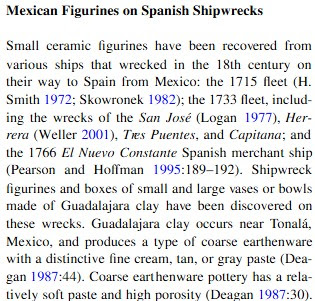Written by the TreasureGuide for the exclusive use of the Treasure Beaches Report.
An international team that included Pante analyzed the tool and concluded that the bone had been flaked using a hammer stone or another object. It had also been scraped and polished.
The bone point has been dated to 800,000 years ago, at which time Homo erectus lived at Olduvai. This species is known to have made bone hand axes that look similar to the stone Acheulean hand axes they used as all-purpose butchery tools. Bone hand axes that are more than a million years old have also been found at Olduvai and at the site of Konso in Ethiopia. According to Pante, making bone tools is one of the markers of our hominin ancestors achieving modern human behavior. “Now that we see [this ability developing] much earlier,” he says, “we can say that Homo erectus was a lot more human than we would have originally thought.”...
---
It is important for a detectorist to be familiar with artifacts of various materials, including those other than metal. If you are out in the field metal detecting, you'll occasionally see other types of treasures along the way. Being able to recognize various types of treasure means you'll be able to find other types of treasure (some of my favorite and oldest finds are non-metallic), but it also means you have a good chance of recognizing important signs that will help you with your metal detecting. Although bone artifacts and ceramic figurines may not be what you most want to find, they are definitely treasures, and just as importantly, can tell you that that you are in an area that might produce some very old stuff. They can help you, as we say, "read" the site. If you are seeing things that are hundreds of years or even thousands of years old, there is a good chance of there also being more recent items in the area. There will often be layers of various ages at sites favored by humans.
Detectorists have seen bone artifacts as well as ceramic figures while metal detecting the Treasure Coast. Those items weren't as old as those mentioned above, but if you do see something like that you want to be able to recognize. Some people like to find old stuff, but wouldn't recognize some of the oldest things out there.
One Treasure Coast find having the greatest world-wide importance is a mammoth bone bearing a carved picture of a mammoth. I've mentioned that before. Here is a link to a post about that important artifact.
I once attended a conference in Vero on that topic. It was very educational and many artifacts were on display. Richard Hulbert of the Florida State Musem was there to identify fossils finds.
It is not likely that as a beach detectorist you will run into an archaeological site. Beaches often destroy the archaeological context sites, but you might see an item that has been washed out of the dunes. You will want to recognize those items and be alerted to the possibility of a nearby archaeological site, whic you will want to report and protect.
On the topic of ceramic figures I've reported on several more modern examples that were found along the Treasure Coast.
Below is a link to a very interesting academic paper on Spanish Colonial figurines, many of which were found in Florida. The article also talks about Spanish Colonial figurines that were discovered as cargo on Spanish shipwrecks.
(PDF) Ceramic Figurines in Spanish West Florida
From that paper, below are some examples of figurines found at a land site - a presidio in West Florida.
 |
| Source: Surfguru.com. |



